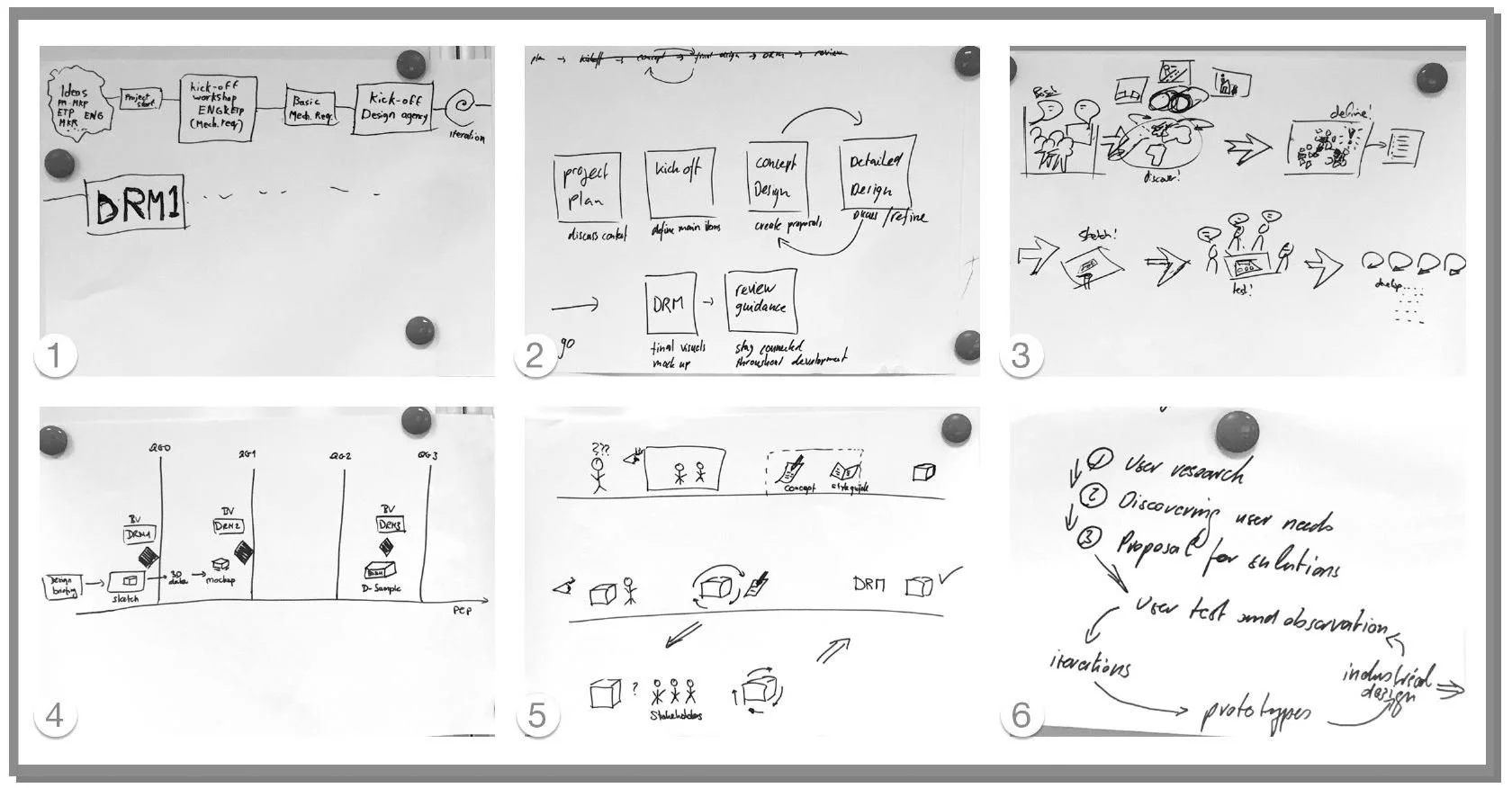HOW TO INTEGRATE HUMAN-CENTERED DESIGN PRINCIPLES INTO AN EXISTING CORPORATE DESIGN?
Case Study: Human-Centered Design at Bosch Security Systems
This study, conducted in collaboration with Bosch Security Systems in Grasbrunn, Germany, aimed to integrate human-centered design principles into the company's established visual brand language (VBL). The central marketing department had previously developed a VBL guideline for all products across various business units (BUs). However, ensuring consistent adherence to this guideline while also prioritizing user-centric design posed a significant challenge.
The primary research questions were:
How can user-centered design principles be effectively integrated into an existing visual brand language?
How can the product design process be made more user-centered and intuitive?
UX Methods Employed:
Analysis-Synthesis Bridge Model: A qualitative research approach used to bridge the gap between data analysis and synthesis.
Expert Interviews and Secondary Research: Gathering insights from industry experts and existing research.
Design Thinking Workshop: Facilitating a collaborative workshop to define mental models, create user profiles, identify value propositions, and engage in group ideation and brainstorming.
User Profiles and Value Propositions: Developing detailed descriptions of target users and their needs to guide design decisions.
Design Exercise: Business Origami Prototyping: Creating rapid prototypes and testing them with real users using the business origami methodology.
THE IMPACT OF AESTHETICS AND UX ON DEVELOPMENT NEW PRODUCTS.
This paper examines the interplay between design aesthetics and user experience (UX) design, exploring how these elements contribute to product innovation. It provides definitions and conceptual frameworks for both aesthetics and UX, followed by a discussion of the challenges and opportunities associated with their integration in everyday products. Through illustrative examples, the paper highlights how the convergence of design aesthetics and UX can enhance product appeal and functionality, ultimately positioning products favorably within the consumer market.

